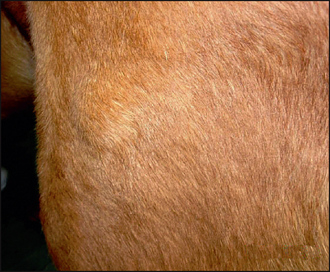44 Introduction to cutaneous nodules and swelling
A nodule is a solid, palpable, circumscribed elevation of more than 1 cm in diameter above the epidermis (Fig. 44.1), which may extend down into the dermis, subcutis and the underlying muscle. Most commonly they result from a massive accumulation of either inflammatory or neoplastic cells, or, uncommonly, due to accumulation of calcium or other deposits such as amyloid. A tumour is a large nodule or mass which is not necessarily neoplastic. A draining or sinus tract connects an area of inflammation in deeper tissue, such as the dermis and subcutis, to the skin surface. Drainage through the tract is a means of removing the by-products of inflammation and other debris. Single or multiple nodules may be present in the same animal.




